Q
What is the Insurance Price of Mazda 3 Hatchback? See How Much Should You Pay
In Malaysia, the insurance cost of the Mazda 3 Hatchback varies depending on factors such as the car's price, engine displacement, the owner's age, driving record, and the type of insurance. Generally, the annual premium ranges from RM2,000 to RM4,000. To get an accurate quote, you need to consult an insurance company or an agent.
As a popular compact hatchback, the insurance cost of the Mazda 3 Hatchback is also influenced by the vehicle's safety performance and anti - theft system. For example, it is equipped with advanced safety technologies like the i - Activsense system, which helps reduce insurance risks and may lower the premium.
Moreover, car owners can choose between comprehensive insurance and third - party insurance. Comprehensive insurance offers broader coverage but comes with a higher cost, while third - party insurance is more affordable but has limited protection. It is recommended that car owners compare quotes from several insurance companies before purchasing insurance and consider increasing the No Claim Discount (NCD) to further reduce the premium. Understanding these factors not only helps you make a more informed choice when selecting insurance but also gives you a more comprehensive understanding of the auto insurance market.
Special Disclaimer: This content is published by users and does not represent the views or position of PCauto.
Related Q&A
Q
What Segment is Mazda 3 Hatchback?
The Mazda 3 Hatchback falls into the C-Segment (also known as compact cars segment) in the Malaysian market, sharing the same class as models like the Honda Civic and Toyota Corolla. This five - door hatchback is popular among young consumers for its dynamic design, refined interior, and excellent handling performance. The Skyactiv - technology engine it's equipped with strikes a balance between fuel efficiency and power output, making it suitable for both city driving and long - distance trips.
In Malaysia, C - Segment models are well - received for their combination of practicality and driving pleasure. The Mazda 3 Hatchback further enhances its competitiveness by offering a wide range of features such as a head - up display and a Bose audio system.
It's worth noting that when Malaysian consumers are making a purchase, they can compare the after - sales warranty policies and spare - parts availability of competing models in the same segment. At the same time, they should also consider their own needs regarding body size and trunk space. Although the hatchback design is stylish, its cargo - carrying capacity is slightly inferior to that of the sedan version. If you often need to carry a large amount of cargo, you may need to weigh the pros and cons.
Q
What is the Reslae Value of Mazda 3 Hatchback?
The Mazda 3 Hatchback has shown stable resale value in the Malaysian used - car market. This is mainly due to its outstanding design, reliable powertrain, and the brand's good reputation. Generally, a three - year - old used Mazda 3 Hatchback can retain 60% to 70% of its original price, depending on the vehicle's age, mileage, and maintenance condition. If the car has been well - maintained and has low mileage, its residual value could be even higher.
Mazda's Skyactiv technology has improved fuel efficiency and the driving experience, further enhancing its market competitiveness. Regular maintenance at authorized service centers and keeping complete records can also significantly increase the used - car value. Moreover, Malaysian consumers prefer Japanese cars for their high durability and low maintenance costs, which makes the Mazda 3 Hatchback quite popular in the used - car market.
For potential buyers, it is recommended to check the vehicle's accident history and repair records. At the same time, compare it with competing models of the same year, such as the Honda Civic or the Toyota Corolla Hatchback, to make a more comprehensive decision.
Q
How Many CC is Mazda 3 Hatchback?
The Mazda 3 Hatchback offers engine options in the Malaysian market, mainly including the 1.5-liter and 2.0-liter Skyactiv-G gasoline engines with displacements of 1496cc and 1998cc respectively. Both of these engines adopt Mazda's advanced Skyactiv technology, which focuses on balancing fuel efficiency and power output. The 1.5-liter version is suitable for daily commuting, while the 2.0-liter version can provide stronger power performance.
For Malaysian consumers, it's important to choose the right engine displacement according to their needs. Displacement not only affects power performance but also road tax and fuel economy. In Malaysia, road tax is calculated based on engine displacement; the larger the displacement, the higher the road tax. Thanks to the optimization of Skyactiv technology, these two engines can achieve good power output while also taking fuel economy into account.
The Mazda 3 Hatchback is very popular among young consumers for its excellent handling and Kodo design language. It's a popular hatchback model in the Malaysian market that combines sportiness and practicality, and it can handle both city driving and occasional long - distance trips.
Q
What is the Engine in Mazda 3 Hatchback?
The Mazda 3 Hatchback mainly offers two high - performance Skyactiv - G gasoline engine options in the Malaysian market, namely the 1.5 - liter and 2.0 - liter four - cylinder naturally aspirated engines. The 1.5 - liter version has a maximum output power of 114 horsepower, which is suitable for daily commuting and has excellent fuel economy. The 2.0 - liter version provides 156 horsepower, with more abundant power. It is also equipped with Mazda's unique Skyactiv - Vehicle Dynamics vehicle dynamic management system, offering more precise handling performance.
Both of these two engines adopt a high - compression ratio design (13:1). Combined with direct - injection technology and a 4 - 2 - 1 exhaust system, they effectively improve combustion efficiency and reduce fuel consumption, while meeting the Euro 5 emission standards in Malaysia. It's worth noting that Mazda's Skyactiv technology optimizes internal engine friction and uses lightweight design. While maintaining the linear power output of the naturally aspirated engine, it also takes environmental protection performance into account, making it suitable for Malaysia's diverse road conditions.
If you have higher performance requirements, you can pay attention to the Skyactiv - X compression - ignition engine version available in overseas markets. Its thermal efficiency is further improved through the SPCCI spark - controlled compression ignition technology. However, this version has not been introduced to Malaysia yet. It is recommended that car owners regularly use the 0W - 20 low - viscosity engine oil recommended by the original factory and 95 - octane or higher gasoline to fully unleash the engine's performance.
Q
What is the Gearbox Type of Mazda 3 Hatchback?
The Mazda 3 Hatchback offers two main types of transmissions in the Malaysian market, namely the 6-speed automatic manual integrated transmission (Skyactiv-Drive) and the 6-speed manual transmission. The specific configuration depends on the model version and the year. Among them, the Skyactiv-Drive automatic transmission is well - known for its smooth shifting experience and fuel economy. It adopts Mazda's exclusive Skyactiv technology, which enhances the driving experience by optimizing transmission efficiency and reducing power loss. The manual transmission version is more suitable for drivers who pursue the joy of control, providing more direct shifting feedback. It's worth mentioning that Mazda's Skyactiv technology not only focuses on performance but also takes environmental protection needs into account, which meets the preference of the Malaysian market for energy - efficient models. If you have further questions about the transmission configuration of specific models, it is recommended to check the official website of Mazda Malaysia or consult local dealers to get the latest information. At the same time, you can also take a test drive to experience the actual performance of different transmissions so as to choose the version that best suits your driving habits.
Q
What is the PCD Size of Mazda 3 Hatchback?
The PCD (Pitch Circle Diameter) of the Mazda 3 Hatchback is 5x114.3. This means there are 5 bolt holes on the wheel hub, and the centers of these holes are distributed on a circle with a diameter of 114.3 millimeters. This specification is quite common in the Malaysian market and is shared by many Japanese - made models such as the Honda Civic and Toyota Corolla, which makes it convenient for car owners to replace or upgrade their wheels. Understanding the PCD size is crucial when replacing wheels or installing new tires, as an incorrect PCD will prevent the wheels from being installed properly, which can affect driving safety.
Apart from the PCD, when choosing wheels, car owners also need to pay attention to the center bore diameter (CB) and the offset value (ET) to ensure a perfect match with the vehicle. In Malaysia, many wheel modification shops are familiar with these parameters. It's recommended that car owners consult professionals or refer to the vehicle manual before modification to ensure compatibility.
The Mazda 3 Hatchback is well - known for its handling and design. A reasonable wheel upgrade can further enhance its appearance and performance. However, it's essential to choose high - quality products that meet the specifications to ensure safety.
Q
Does Mazda 3 Hatchback Have Apple Carplay?
Yes, the Mazda 3 Hatchback in the Malaysian market is indeed equipped with Apple CarPlay. This feature has become standard in recent models, allowing iPhone users to seamlessly connect their phones to the car's display and use apps like navigation, music, and calls. The entertainment system of the Mazda 3 Hatchback also supports Android Auto, meeting the needs of users with different types of phones. Its user interface is clean and smooth, integrating well with the Mazda Connect system, which enhances both convenience and safety while driving. In addition to Apple CarPlay, the vehicle also comes with several practical technologies, such as a Head-Up Display (HUD) and a Bose sound system, further enhancing the driving experience. For Malaysian consumers, the Mazda 3 Hatchback is not only known for its stylish design and handling performance, but its rich technological features also make it a popular choice among cars in the same class. If you value smart connectivity features, this car is worth considering.
Q
What is the Tyre Brand of Mazda 3 Hatchback?
The original - equipped tire brands of the Mazda 3 Hatchback in the Malaysian market may vary depending on the model year and configuration. Common combinations include international brands such as Bridgestone, Dunlop, or Toyo. Specific models, like the Bridgestone Turanza T005A or Dunlop Enasave EC300+, focus on quiet comfort and wet - surface performance, meeting the needs of the local rainy climate. Car owners can confirm the original specifications through the sidewall markings of the tires or the vehicle manual. It is recommended to choose tires that match the original size (e.g., 215/45 R18) and load index to ensure safety.
If replacement is needed, similar products such as the Michelin Primacy 4 or Goodyear EfficientGrip can be considered. They also emphasize low rolling resistance and durability. However, it should be noted that the dry and wet - surface performance and wear - resistance index of tires from different brands may affect the driving experience.
In Malaysia, where it is hot and rainy, regularly checking the tire pressure and tread depth (it is recommended to be no less than 1.6 millimeters) can extend the tire life and improve fuel economy. Pay more attention to the drainage performance before the rainy season to prevent skidding.
Q
Is Mazda 3 Hatchback a Good Car? Learn the Pros and Cons Here
The Mazda 3 Hatchback is a compact hatchback that's quite popular in the Malaysian market. Its advantages include a stylish and dynamic exterior design, delicate interior craftsmanship, and excellent handling performance. The Skyactiv - technology engine it's equipped with strikes a good balance between fuel economy and power output. Meanwhile, the standard i - Activsense safety system offers leading active and passive safety features in its class.
However, the rear - seat space is relatively cramped, and the maintenance and repair costs are slightly higher than some Japanese competitors. The sporty suspension tuning might not meet the comfort needs of some consumers. For Malaysian consumers, this car is especially suitable for young people who pursue driving pleasure. Its Kodo design language also enjoys high popularity in the local car modification circle.
It's worth noting that in tropical climates, it's advisable to choose ventilated seats and regularly check the air - conditioning system. At the same time, the 5 - year warranty policy provided by the manufacturer can effectively reduce the cost of car ownership. Among models in the same class, you can also refer to the Toyota Corolla Hatchback or the Honda Civic Hatchback for a horizontal comparison. It's recommended to take a test drive and then make a choice according to your personal needs.
Q
What is the Width of Mazda 3 Hatchback?
According to official data, the body width of the Mazda 3 Hatchback is 1,795 millimeters. This dimension puts it in the upper - middle range among compact hatchbacks in the Malaysian market. It offers both a comfortable seating space and great maneuverability for city driving. For Malaysian consumers, this width ensures that they don't feel cramped when driving on narrow streets or in parking lots, while also guaranteeing sufficient lateral space for passengers inside the car.
The Mazda 3 Hatchback features the brand's unique Kodo design language. The smooth body lines not only enhance the car's visual dynamism but also optimize its aerodynamic performance. In Malaysia's tropical climate, the car's air - conditioning system can effectively cool the entire cabin, ensuring a comfortable driving and riding experience.
Notably, the handling performance of the Mazda 3 Hatchback has also received wide acclaim. Its precise steering and stable cornering performance are well - suited to Malaysia's winding roads. Additionally, this car is equipped with a wealth of safety features, such as blind - spot monitoring and lane - keeping assist systems, which provide extra protective support for Malaysian drivers.
Latest Q&A
Q
Is there a recall on 2019 Kia Optima engines?
Regarding the engine recall issue for the 2019 Kia Optima, there's currently no official recall announcement specifically targeting the Malaysian market. However, looking at international records, certain overseas markets did see recalls for the 2019 Optima due to potential engine faults – think issues like bearing wear in Theta II GDI engines, which could potentially lead to stalling or even fire risks. If you're a Malaysian Optima owner, I’d strongly suggest heading to Kia Malaysia’s official website, finding their recall check page, and plugging in your Vehicle Identification Number (VIN) to see if your ride is affected. Or, just swing by your nearest authorized service center for a free inspection – better safe than sorry.
It’s worth noting that Hyundai Motor Group implemented an extended warranty policy worldwide for Theta II engine concerns. For some models, the warranty coverage for engine-related components can be extended up to 15 years or 200,000 kilometers, whichever comes first. That’s a solid demonstration of the brand taking responsibility for its customers.
For Malaysian owners, a proactive step during regular maintenance is to specifically request a check on the engine's condition – keeping an eye on oil loss and any unusual noises is key for preventing potential problems. Also, it’s a good idea to stay updated on any service campaigns announced by local Kia dealers. Sometimes, these campaigns might offer free inspections or repairs for issues that aren’t officially classified as recalls but are still worth addressing.
If your vehicle starts showing symptoms like warning lights flashing, a noticeable drop in power, or excessive oil consumption, don’t delay – contact after-sales service immediately. Catching and addressing issues early can significantly reduce the cost of repairs down the line.
Q
How long will a 2019 Kia last?
The lifespan of a 2019 Kia largely depends on how well you maintain it, your driving habits, and Malaysia's road conditions. If you stick to the manufacturer's recommended maintenance schedule—like changing the oil every 6 months or 10,000 km and checking key components—drive sensibly, and avoid prolonged rough roads, these models typically clock 200,000 to 300,000 km or last over 10 years. Malaysia's hot and humid climate takes a toll on rubber parts (belts, bushings) and batteries, so it's smart to shorten inspection intervals for these and regularly clean the AC system to prevent mold growth. Hyundai-Kia's Theta II and Nu engines are pretty solid tech-wise, and paired with the 6AT transmission, the powertrain reliability holds up well against competitors—just don't skip that transmission fluid change.
Notably, Malaysia's COE system pushes some owners to prioritize long-term care, so I'd recommend using SP/GF-6A spec oil at authorized dealers or certified workshops. On the used market, 2019 Kias with full service records still hold decent resale value. If you're planning to keep it for the long haul, extended warranty might be worth considering. Durability varies a bit between models like the Cerato and Sportage due to their different purposes—SUVs like the Sportage might need more frequent suspension checks.
Q
Are Kia Optimas cheap to fix?
When it comes to the maintenance costs of the Kia Optima in Malaysia, this sedan falls right in the middle of the pack for midsize cars. Parts and labor are definitely easier on the wallet compared to luxury brands, though you might pay a bit more than some heavily localized Japanese models. The Optima's 2.0L and 2.4L naturally aspirated engines are pretty tried-and-true tech – basic services like an oil change with filters will set you back around RM300 to RM500, which lines up with what you'd pay for other cars in its class. Just a heads-up though: if you're looking at the 1.6T turbocharged version, expect those service bills to creep up a notch.
Kia's authorized service center network covers most major cities in Malaysia, so getting your hands on genuine parts is usually straightforward. That said, some non-critical components might need to be ordered in, so it's smart to stick to regular maintenance schedules to avoid bigger repair headaches down the line. If you're in the market for a used Optima, prioritize ones with a complete service history – and maybe look into third-party warranty plans to help cover any unexpected major repairs. All in all, the Optima is more budget-friendly to maintain than its European rivals, but you'll still need to set aside more than you would for a basic econobox. Choosing official or certified repair channels can really help keep those costs in check.
Q
What kind of engine is in the 2019 Kia Optima?
The 2019 Kia Optima hits Malaysian roads with two petrol engine choices: a 2.0-litre naturally aspirated Theta II MPI and a 1.6-litre turbocharged Gamma T-GDI. The 2.0L puts out 152 hp and 192 Nm of torque, perfect for folks who prioritize a smooth, laid-back drive. On the flip side, the 1.6T cranks things up with a meatier 180 hp and 265 Nm, catering to drivers who crave that extra zip when they hit the throttle. Both engines are mated to a 6-speed automatic gearbox, striking a decent balance between fuel efficiency and everyday comfort.
What’s neat about the Optima’s engines is the tech packed in—think direct injection and turbocharging (for the 1.6). These aren’t just buzzwords; they actually help boost power while keeping fuel consumption in check. For Malaysian drivers, both engines should handle our local climate and road conditions like a champ. Kia’s engines have also proven their durability over time, and maintenance costs won’t break the bank. If you’re really hungry for more power, there’s the Optima GT with a 2.0-litre turbo, but keep in mind that trim’s a bit of a rare find in Malaysia.
Q
What is a good year for Kia Optima?
If you're in the Malaysian market for a Kia Optima, the 2016 to 2018 model years come highly recommended. These iterations strike a solid balance between reliability, features, and driving dynamics. The 2016 facelift, in particular, brought a more stylish exterior, a nicer interior feel, and stepped-up safety kit like blind-spot detection and lane-keeping assist. Then, the 2017 and 2018 models refined the powertrain further, delivering an even smoother ride.
On top of that, used Optimas in Malaysia are pretty reasonably priced, and maintenance costs won't break the bank either. They're a solid pick if you're on a budget but still want the comfort of a midsize sedan. A quick heads-up though: when shopping used, always prioritize ones with complete service records. It's also smart to get a proper inspection through official channels to make sure the car's in good shape. Malaysia's hot and humid weather can be tough on a car's electronics and rubber parts, so keeping an eye on the cooling system and seals will definitely help keep it running longer.
View MoreRelated News

Seeing the Ferrari Purosangue reminds one of the Mazda 3 Hatchback
Kevin WongDec 2, 2024
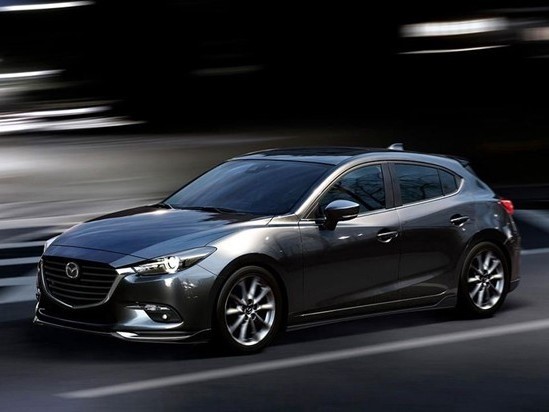
2023 Mazda 3 Hatchback: Six colors, two configurations, is it worth RM160,000?
JohnOct 17, 2024
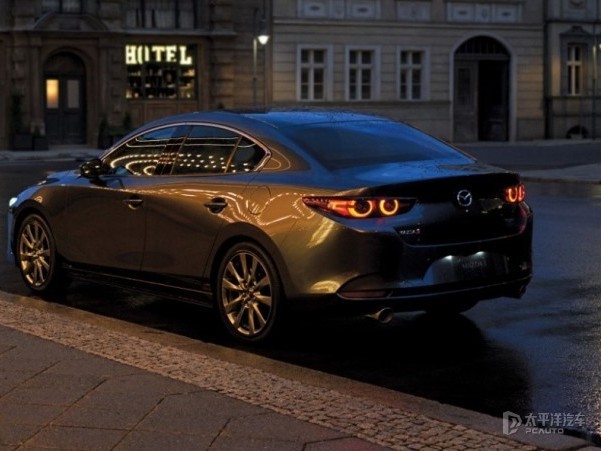
Mazda 3 Hatchback, priced from RM166,059, how to choose between the two models?
AshleyJul 15, 2024

Rumor: Toyota and Mazda collaborate to develop the next-generation MX-5 and GR86
AshleySep 30, 2025

MAZDA EZ-60 will be launched in China, and will be available in other global markets in 2026
RobertSep 30, 2025
View More





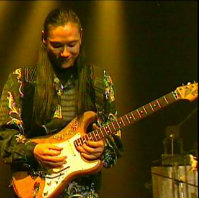







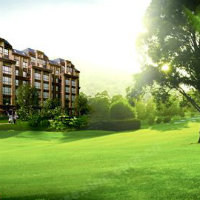

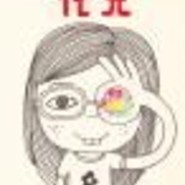
Pros
Cons